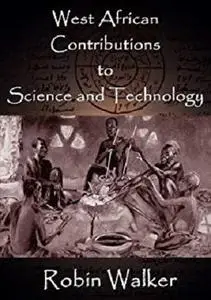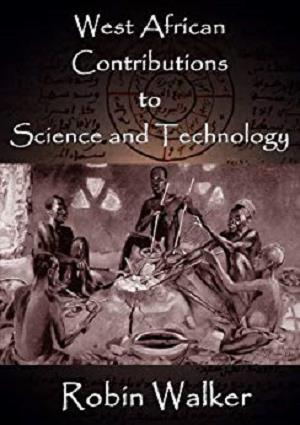West African Contributions to Science and Technology (Reklaw Education Lecture Series Book 11) by Robin Walker
English | August 2, 2012 | ASIN: B008SAV6VG | 83 pages | AZW3 | 1.73 MB
English | August 2, 2012 | ASIN: B008SAV6VG | 83 pages | AZW3 | 1.73 MB
When West Africa is mentioned in a historical context, it is usually presented as the traditional hunting ground for slaves. Very few writers have shown any interest in the contributions of West Africans to science and technology. Thus there has been very little research that challenges the perspective that all that West Africans have ever been historically is to be under the whip of other peoples.
Fortunately, the tide is beginning to change, a National Geographic article entitled Reclaiming the Ancient Manuscripts of Timbuktu mentioned that some scholars believe that 700,000 manuscripts, some dating to the twelfth century, have survived in the West African city of Timbuktu. They also say the manuscripts ‘covered an array of subjects: astronomy, medicine, mathematics, chemistry,’ etcetera.
The article mentioned other data that is little known today but well worth repeating: ‘Beginning in the 12th century, Timbuktu was becoming one of the great centers of learning in the Islamic world. Scholars and students traveled from as far away as Cairo, Baghdad, and elsewhere in Persia to study from the noted manuscripts found in Timbuktu. Respected scholars who taught in Timbuktu were referred to as ambassadors of peace throughout North Africa.’
Like the National Geographic article, this lecture essay presents a different side to West African historical achievements. Challenging all stereotypes, it is a general introduction to the exciting role played by early West Africans in the evolution of Mathematics, Astronomy & Physics, Metallurgy, Medicine & Surgery, Boat building & Navigation, Architecture, and Crafts & Industry.
There are some interesting findings that that appear in this text:
•The Bamoun Kingdom, now in today’s Cameroon, has 7,000 surviving manuscripts in their own script
•Timbuktu astronomers used the cosine, tangent, cotangent, secant and cosecant functions of trigonometry
•The Dogon of Mali had an early and wholly indigenous notion of ‘big bang’ derived from a singularity
•A number of iron and copper tools were excavated in Senegal dating from 2800 BC
•The total amount of gold mined in the desert regions of West Africa to the year 1500 was $35 billion at 1998 gold prices
•A surviving sixteenth century Timbuktu manuscript has a formula for making toothpaste and adds that regular brushing of your teeth removes bad breath
•The majority of enslaved Africans were inoculated against smallpox BEFORE they were deported from Africa
•A 1342 text published in Cairo mentions two royal Malian voyages sailing across the Atlantic involving hundreds of vessels
•The Royal Palace of the Ashanti Empire contained a suite of apartments on its upper floor that reminded a visitor to the palace of Wardour Street in central London.
•Glass was manufactured at Ile-Ife in the sixth century AD
Finally:
•According to New Scientist, there are surviving Timbuktu manuscripts that ‘cover botany, medicine, biology, chemistry, mathematics and climatology’
In writing this ebook, the author builds on the research of Professor Cheikh Ana Diop, Professor Ivan Van Sertima, Professor Charles Finch, Mr Hunter Adams, Mr Benaebi Benatari, Professor Rodney Medupe, Dr Nnamdi Elleh and Professor Claudia Zaslavsky.
This lecture essay is one of four essays that introduce African and African Diasporan contributions to science and technology. The other three in the series concern Ancient Egypt, early East Africa and African Diasporan contributions to science and technology.



